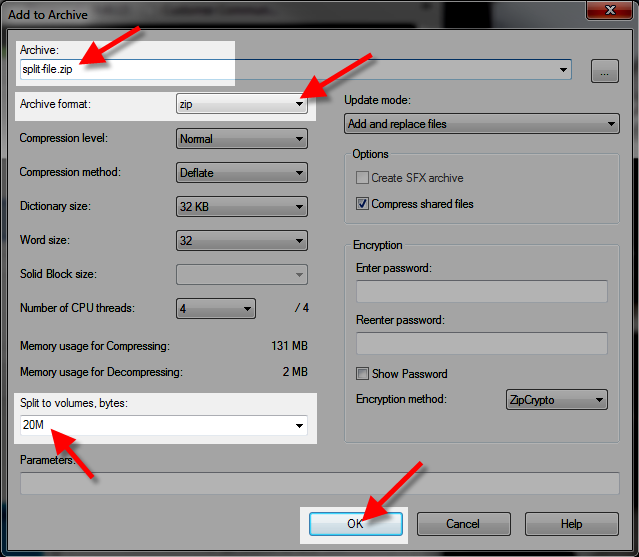
- #7zip command line zip folder how to#
- #7zip command line zip folder install#
- #7zip command line zip folder zip file#
- #7zip command line zip folder archive#
So, there is no restriction to zip and unzip using same method.
#7zip command line zip folder zip file#
Zip file created with any software can be opened by any other software that supports zip file format.
#7zip command line zip folder archive#
#7zip command line zip folder how to#
Zip -password PASSWORD archive.zip filename1.txt filename2.txt How to create zip files on MacOS using WinZip Please note that the password protection is weak and can be quite easily cracked.

zip extension is added to the name of the file. Zip file is created and save in the current working directory.Select the files you want to zip, and right click on their selection.Locate the files or folders you want to archive using Mac Finder.This method can be used to zip files and folders or both of these. How to Zip files on MacOS by built in method In this guide, we will provide different ways to zip files on MacOS using default as well as third party methods.
#7zip command line zip folder install#
You need not install additional software to complete basic compression.īut to perform some extra tasks, you may need to have software like WinZip or WinRAR. It even works as a filter.ħz doesn't create archives with full filesystem information on UNIX, so you'd need to use tar before using 7z (but since 7z stores other information about the tar file, I'd recommend using xz, as it is designed for it): tar cf - file1 file2 dir | 7za z -si provides built-in compression utility to create zip files.

7-Zip doesn't use the operating system's wildcard mask parser, and consequently treats. Why doesn't the command line version add files without extensions to an archive You're probably using a. Xz is a UNIX tool, that uses LZMA2 for compression, but works the way gz, bz2, etc works. To avoid temp file usage, you can use Extract command of 7-Zip or drag-and-drop from 7-Zip to 7-Zip. To script this, Im using the command-line version of 7-Zip.

If you want to use the same compression algorithm with your tarballs, use the -J switch with tar: tar cJf file1 file2 dir I recommend this method in case Windows users can't open 7z archives (in case you want to advice a tool for that: PeaZip). It can also create self-extracting archives with the -sfx switch: 7za a -sfx archive.exe files1 file2 dir Usually in the package p7zip, you'll get the 7z and 7za command, with which you can create your own 7z archives.ħza can also decompress standard ( pkzip) zip archives (and create them as well with the -tzip switch).Ĭompressing: 7za a archive.7z file1 file2 directory/ Well, when it comes to distributing files for a variety of operating systems, I'd recommend 7-zip.


 0 kommentar(er)
0 kommentar(er)
